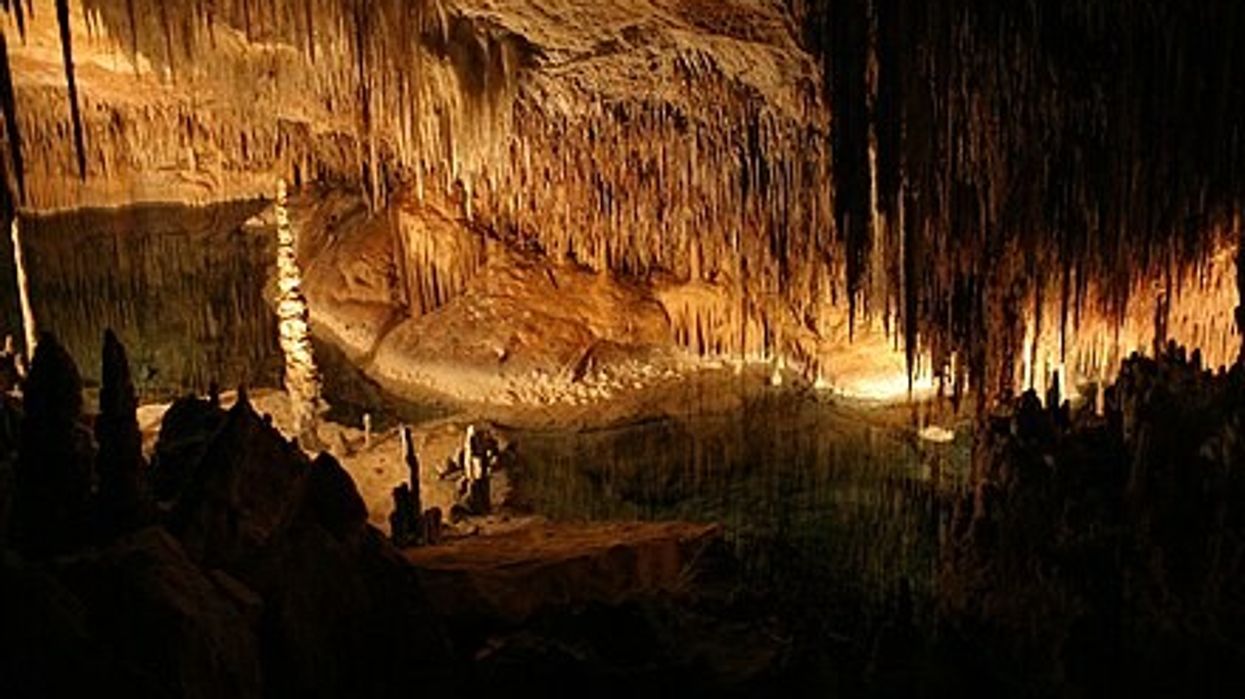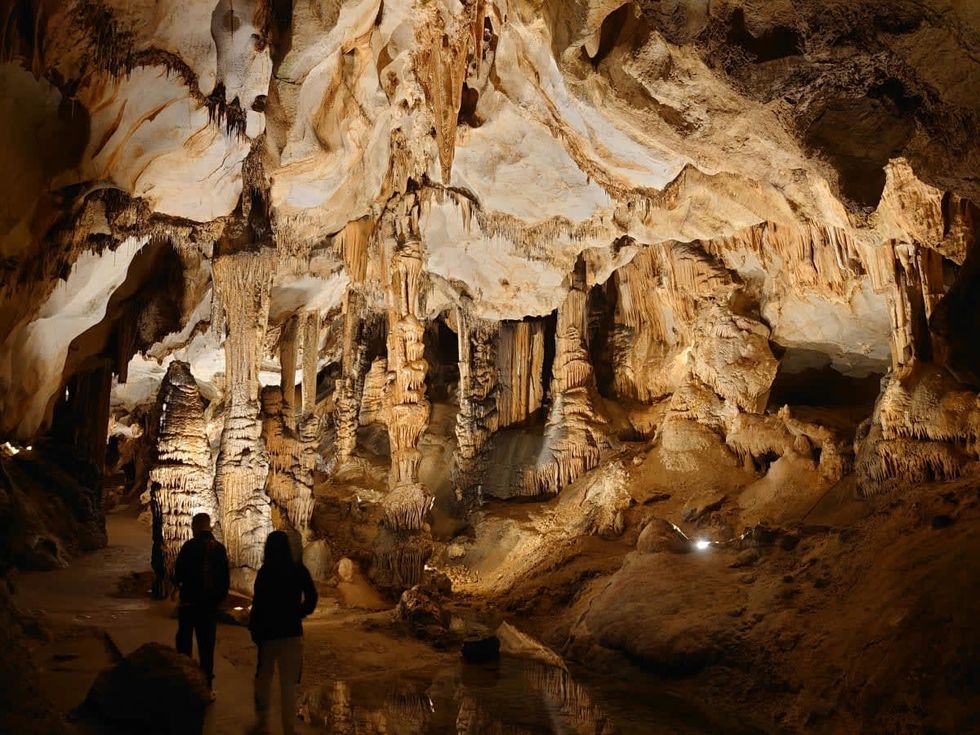Nuclear weapons are among the most devastating weapons ever created, with the potential to wipe out human civilization in a single strike. According to the UN, the risk of nuclear conflict is now higher than it has been in decades. Experts are increasingly asking: What would happen if nuclear war broke out today? The Future of Life Institute (@futureoflifeinstitute) recently shared a chilling 3D-simulated YouTube video illustrating the catastrophic aftermath of such a scenario, and it's leaving viewers deeply unsettled.

According to their YouTube description, The Future of Life Institute (FLI) is a nonprofit focused on reducing catastrophic risks posed by advanced technologies like AI, biotechnology, and nuclear weapons. In this video, they depict a terrifying scenario: a nuclear war between Russia and the U.S. The simulation uses computer models to illustrate the devastating, post-apocalyptic consequences of such a conflict.
“When one side fires a nuclear missile and the other side detects them and fires back before impact,” the narrator explains in the video. He then goes on to describe an example in case the US submarine would launch ballistic missiles from the west of Norway. These missiles would start striking Russia after about 10 minutes. Then the Russians from the north of Canada would start hitting the US a few minutes later. The video continues to demonstrate that the very first strikes would be high-altitude Electromagnetic Pulse (EMP) attacks, frying electronics and power grids, creating an electromagnetic pulse of tens of thousands of volts per meter. “Each impact creates a fireball about as hot as the core of the Sun,” the narrator reveals, and adds that it is "followed by a radioactive storm cloud.”

These intense explosions would vaporize people nearby. Fires would erupt. The fire would prompt the formation of a blastwave that would spread and damage buildings. Glass skyscrapers would melt and everything made of asphalt would turn into flammable hot liquid. But this isn’t the worst part. According to the video, the worst part is “nuclear winter,” which is caused by the black carbon smoke from nuclear firestorms. The firestorms usually spew plumes of black smoke up into the stratosphere far above any rain clouds that could wash out the smoke. High-altitude jet streams are so fast that it would take only a few days for the smoke to spread across much of the northern hemisphere.
As a result, the Earth would become freezing-cold, and the smoke would block out the Sun, causing a total collapse of life on the planet. “It [nuclear war] has no winners, only losers,” the narrator says, concluding the video.
Pran Nath, a professor from Northeastern University told Northeastern News that the aftermath of a nuclear war has three stages. “When the nuclear blast occurs, because of the chain reaction, in a very short period, a lot of energy and radiation is emitted,” Nath says. “In the first instance, a huge flash occurs, which is the nuclear reaction producing gamma rays. If you are exposed to it, people, for example, in Hiroshima were essentially evaporated, leaving shadows.” The second phase is a shockwave and heat blast or a fireball that would travel around the speed of sound, around 760 miles per hour. The third phase is the fallout in which the mushroom cloud is created, as also explained by the video above.

“We can and must, however, do everything we can to avoid nuclear war. The effects are too likely to be globally catastrophic,” proclaimed Assistant Professor Cheryl Harrison from LSU Department of Oceanography & Coastal Sciences in a 2022 study about the effects of nuclear war. She described that not just the buildings or the people, a nuclear war would put an end to the life in oceans as well, eating up algae and hence, destroying marine life forever. It would be the next “Nuclear Little Ice Age," as per the LSU study.


















 Representative Image: Accents reveal heritage and history.
Representative Image: Accents reveal heritage and history.  Representative Image: Even unseen you can learn a lot from an accent.
Representative Image: Even unseen you can learn a lot from an accent. 

 Rice grain and white rice.Image via
Rice grain and white rice.Image via  Person eats rice.Image via
Person eats rice.Image via  Washing and rinsing rice.
Washing and rinsing rice.  Mother and daughter eating rice meal.Image via
Mother and daughter eating rice meal.Image via 

 Bees feeding on food source.Image via
Bees feeding on food source.Image via 
 In the depths...Pexels | francesco ungaro
In the depths...Pexels | francesco ungaro Hope the lights stay on. Pexels | parfait fongang
Hope the lights stay on. Pexels | parfait fongang "That was beyond crazy..." YouTube |
"That was beyond crazy..." YouTube |  "This is the stuff of my nightmares..."YouTube |
"This is the stuff of my nightmares..."YouTube |  "Totally blown away..." YouTube |
"Totally blown away..." YouTube | 
 A representative Image of The Atlantic Ocean. Source: Pexels | Kellie Churchman
A representative Image of The Atlantic Ocean. Source: Pexels | Kellie Churchman Representative Image Source: Painting from a series by Ernest Untermann in the museum at Dinosaur National Monument, Utah.
Representative Image Source: Painting from a series by Ernest Untermann in the museum at Dinosaur National Monument, Utah. Representative Image Source: VARIOUS DINOSAURS IN GOBI DESERT. Photo by H. Armstrong Roberts/ClassicStock/Getty Images
Representative Image Source: VARIOUS DINOSAURS IN GOBI DESERT. Photo by H. Armstrong Roberts/ClassicStock/Getty Images
President Donald J. Trump and photo of a forest.
Public united and adamantly opposes Trump’s plan to roll back the Roadless Rule
There doesn't seem to be much agreement happening in the U.S. right now. Differing moral belief systems, economic disparity, and political divide have made a country with so many positives sometimes feel a little lost. Everyone desperately seeks a niche, a connection, or a strong sense of community to which they can feel a "part of," rather than just "apart."
But there seems to be one thing that the country strongly unites over, and that's the "Roadless Rule." With the Trump Administration attempting to roll back conservation policies that protect U.S. National Forests, Americans are saying in harmony an emphatic "No." A nonpartisan conservation and advocacy organization, the Center for Western Priorities, reviewed a comment analysis on the subject. After receiving 223,862 submissions, a staggering 99 percent are opposed to the president's plan of repeal.
What is the 'Roadless Rule' policy implemented in 2001?
The Roadless Rule has a direct impact on nearly 60 million acres of national forests and grasslands. According to the U.S. Department of Agriculture, the rule prohibits road construction and timber harvests. Enacted in 2001, it is a conservation rule that protects some of the least developed portions of our forests. It's considered to be one of the most important conservation wins in U.S. history.
America's national forests and grasslands are diverse ecosystems, timeless landscapes, and living treasures. They sustain the country with clean water and the wood products necessary to build our communities. The National Parks protected under their umbrella offer incredible recreational retreats and outdoor adventure.
Why does the administration want to roll it back?
U.S. Secretary of Agriculture Brooke L. Rollins told the Department of Agriculture in a 2025 press release, “We are one step closer to common sense management of our national forest lands. Today marks a critical step forward in President Trump’s commitment to restoring local decision-making to federal land managers to empower them to do what’s necessary to protect America’s forests and communities from devastating destruction from fires." Rollins continued, “This administration is dedicated to removing burdensome, outdated, one-size-fits-all regulations that not only put people and livelihoods at risk but also stifle economic growth in rural America. It is vital that we properly manage our federal lands to create healthy, resilient, and productive forests for generations to come. We look forward to hearing directly from the people and communities we serve as we work together to implement productive and commonsense policy for forest land management.”
Forest Service Chief Tom Schultz explained the Roadless Rule frustrated land management and acts as a challenging barrier to action. It prohibits road construction needed to navigate wildfire suppression and properly maintain the forest. Schultz said, “The forests we know today are not the same as the forests of 2001. They are dangerously overstocked and increasingly threatened by drought, mortality, insect-borne disease, and wildfire. It’s time to return land management decisions where they belong – with local Forest Service experts who best understand their forests and communities."
Why are people adamantly opposed to the proposed rollback?
A 2025 article in Earthjustice, a nonprofit environmental law organization, expressed its concern over the protection of national forests covering 36 states and Puerto Rico. A rescinded rule allows increased logging, extractive development, and oil and gas drilling in previously undisturbed backcountry. Here is what some community leaders had to say about it:
President Gloria Burns, Ketchikan Indian Community, said, "You cannot separate us from the land. We depend on Congress to update the outdated and predatory, antiquated laws that allow other countries and outside sources to extract our resource wealth. This is an attack on Tribes and our people who depend on the land to eat. The federal government must act and provide us the safeguards we need or leave our home roadless. We are not willing to risk the destruction of our homelands when no effort has been made to ensure our future is the one our ancestors envisioned for us. Without our lungs (the Tongass) we cannot breathe life into our future generations.”
Linda Behnken, executive director of the Alaska Longline Fishermen’s Association, stated, "Roadbuilding damaged salmon streams in the past — with 240 miles of salmon habitat still blocked by failed road culverts. The Roadless Rule protects our fishing economy and more than 10,000 jobs provided by commercial fishing in Southeast Alaska.”
The Sierra Club's Forest Campaign Manager Alex Craven seemed quite upset, saying, "The Forest Service followed sound science, economic common sense, and overwhelming public support when they adopted such an important and visionary policy more than 20 years ago. Donald Trump is making it crystal clear he is willing to pollute our clean air and drinking water, destroy prized habitat for species, and even increase the risk of devastating wildfires, if it means padding the bottom lines of timber and mining companies.”
The 2025 recession proposal would apply to nearly 45 million acres of the national forests. With so many people writing in opposition to the consensus, the public has determined they don't want it to happen.
Tongass National Forest is at the center of the Trump administration's intention to roll back the 2001 Roadless Rule. You can watch an Alaska Nature Documentary about the wild salmon of Tongass National Forrest here:
- YouTube www.youtube.com
The simple truth is we elect our public officials to make decisions. The hope is they do this for all of our well-being, although often it seems they do not. Even though we don't have much power to control what government officials do, voicing our opinions strongly enough often forces them to alter their present course of action. With a unanimous public voice saying, "No!" maybe this time they will course correct as the public wishes.